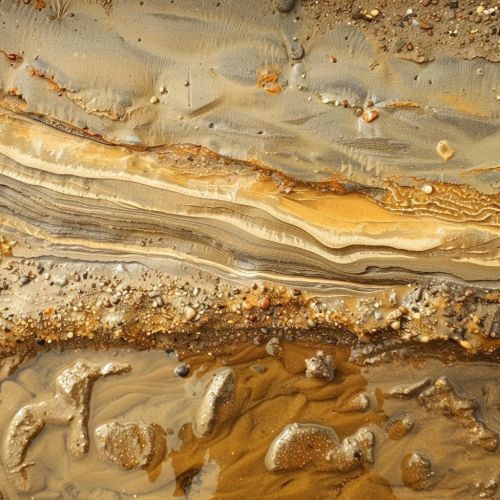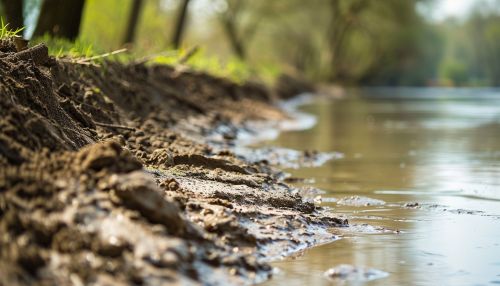Deposition (sedimentology)
Introduction
Deposition in the context of sedimentology is a geological process where sediments, particles of rock and mineral, are added to a landform or land mass. This process plays a significant role in shaping the earth's surface and is a key aspect of the science of sedimentology.
Process of Deposition
Deposition occurs when the forces responsible for sediment transportation are no longer sufficient to overcome the forces of gravity and friction, causing the sediment to fall out of the transport medium and settle on the surface. The type of sediment that is deposited is not only determined by the type of rock the sediment originated from, but also by the environment in which it was transported and deposited.


Factors Influencing Deposition
Several factors can influence the deposition of sediments. These include the size and weight of the particles, the velocity of the transport medium, and the physical and chemical properties of the water or air in which the sediment is being transported.
Particle Size and Weight
The size and weight of the particles are important factors in determining how far they can be transported and where they will be deposited. Larger and heavier particles tend to be deposited closer to their source, while smaller and lighter particles can be transported further before being deposited.
Velocity of Transport Medium
The velocity of the transport medium, usually water or wind, also plays a significant role in deposition. Higher velocities are capable of carrying larger particles and keeping them in suspension for longer periods of time. When the velocity decreases, the transport medium can no longer support these particles, and they are deposited.
Physical and Chemical Properties of the Medium
The physical and chemical properties of the water or air in which the sediment is being transported can also influence deposition. For example, changes in temperature or pH can cause certain minerals to precipitate out of solution, leading to their deposition.
Types of Deposition
There are several types of deposition in sedimentology, including fluvial, aeolian, glacial, and marine deposition. Each of these types of deposition is associated with a specific environment and has unique characteristics.
Fluvial Deposition
Fluvial deposition occurs in river and stream environments. As the velocity of the river decreases, it loses its ability to transport sediment, leading to deposition. This can result in the formation of features such as river deltas and alluvial fans.
Aeolian Deposition
Aeolian deposition occurs when wind transports and deposits sediment. This type of deposition is responsible for the formation of sand dunes and loess deposits.
Glacial Deposition
Glacial deposition occurs when sediment is transported and deposited by glaciers. This can result in the formation of features such as moraines and drumlins.
Marine Deposition
Marine deposition occurs in ocean environments. Sediment can be transported by currents and deposited on the seafloor, leading to the formation of features such as submarine fans and abyssal plains.
Depositional Environments
Depositional environments are specific locations where sediment deposition occurs. These environments can be categorized as terrestrial, coastal, or marine.
Terrestrial Environments
Terrestrial environments include rivers, lakes, and deserts. In these environments, deposition is primarily controlled by water and wind.
Coastal Environments
Coastal environments include beaches, deltas, and estuaries. In these environments, deposition is influenced by both terrestrial and marine processes.
Marine Environments
Marine environments include the continental shelf, the deep sea, and the abyssal plain. In these environments, deposition is primarily controlled by ocean currents.
Importance of Deposition in Sedimentology
Deposition is a fundamental process in sedimentology, as it is responsible for the accumulation of sediment that can eventually form sedimentary rocks. Understanding the process of deposition can provide valuable information about past environments and climate conditions.
